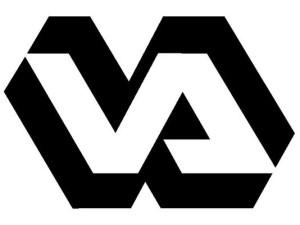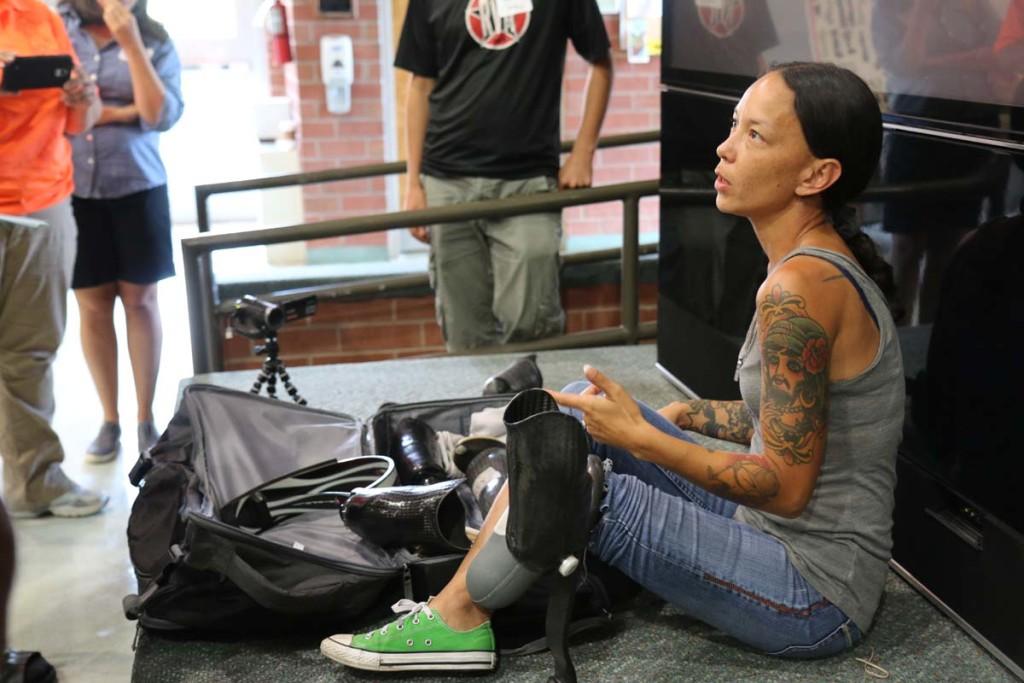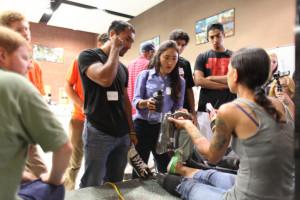 Because of the expense involved with creating most artificial limbs, especially legs, there tends to be a uniformity and utilitarianism in design that make them all look alike. So while prosthetic limbs generally function for both men and women, more men tend to have limbs amputated than women, so most prostheses end up working more for men than women. Not only do they not look the way that a woman may want her prosthesis to look, but quite often they simply don’t work for some of the unique needs of a female amputee.
Because of the expense involved with creating most artificial limbs, especially legs, there tends to be a uniformity and utilitarianism in design that make them all look alike. So while prosthetic limbs generally function for both men and women, more men tend to have limbs amputated than women, so most prostheses end up working more for men than women. Not only do they not look the way that a woman may want her prosthesis to look, but quite often they simply don’t work for some of the unique needs of a female amputee.
Former Army Sergeant Lisamarie Wiley lost her left leg when she stepped on an IED while serving as an interrogator in Afghanistan. She was one of the 13,000 military casualties resulting in extremity injuries in Iraq and Afghanistan between 2003 to 2013. While only 2% of them were women, up to 6% of female service members suffered injuries in non-combat related situations. As the roles of women in the military change, the numbers of female veterans closer to the front lines are increasing, and the numbers of women being wounded in combat are on the rise. Because there are general differences in body size and physiology between genders, women with extremity trauma and amputations simply have unique needs that are not being met.
“Innovative designs need to be accessible, because there will come a day when 3D printers are as common as a household DVD player—and if a part breaks, I want to be able to hit print and have a part in-hand without having to go through a complicated process. I’m telling these designers not to hoard their intelligence, because it’s so important that we encourage knowledge sharing. It’s not just the military or one country in particular that needs these devices, it’s the entire world,” Wiley told a group of student designers at a recent Stratasys Innovation for Veterans Make-a-thon.
Now an advocate for military veterans, Sergeant Wiley has been very outspoken about the needs for new advances in prostheses that cater to women amputees’ specific needs. And she insists that it isn’t simply about vanity, but there are things that other women take for granted every day that she has to take special care to do. Simple things like wearing shoes or dresses need to be taken into account when she decides which of her ten different prosthetic legs she needs to wear. And when she travels, she often needs to bring several along with her, which can be a pain to deal with while dealing with airport security.
If you think that number of prosthetics is excessive, think again. Male amputees often have four or five different devices. Wiley has specific prostheses for running, prostheses for walking around the house and even specialized prostheses for wearing high heels. Her dream is for someone to invest a socket device that allows her to have a single leg prosthesis that fits her limb comfortably, while the lower portion can be easily swapped for alternate uses. But while she is still waiting for that socket, she is getting some help in some of her cosmetic complaints thanks to the women’s corporate networking group The Girls’ Lounge.
Here is some video from the make-a-thon:
The Girls’ Lounge teamed up with Veteran’s Affairs and Stratasys to help address the needs for female-specific prosthetic devices as part of the VA’s Innovation Creation Challenge. The challenge hosted over a hundred designers, engineers, students, teachers and veterans to a make-a-thon event held in Richmond, Virginia in July. The teams of makers were tasked with developing assistive or prosthetic devices that would improve the care and quality of life for veterans. The team from The Girls’ Lounge worked closely with Wiley to develop prosthetic fairings that would appeal to the cosmetic desires of women.
“The beauty of 3D printing is the ability to constantly iterate, prototype and test designs immediately. With our design, we were able to send it to the 3D printer the night before, test the design in the morning and make any design changes before 3D printing our final prototype. We were able to 3D print and test our design within 24 hours versus if you were actually making the product with traditional forms of manufacturing—using molds that would cost thousands of dollars and from weeks to months to produce,” said The Girls’ Lounge team member, Dara Dotz.
Traditionally manufactured prosthetic fairings, like those offered by UNYQ, can often cost thousands of dollars, while 3D printed fairings can be printed for less than twenty dollars. That makes customization for women amputees much more attainable. And as for Wiley’s socket, a team at the challenge did actually tackle the idea and ended up winning the $25,000 cash prize from Google.org so they could continue to develop their design.
Discuss this story in the 3D Printed Prosthetics forum thread on 3DPB.com.
Subscribe to Our Email Newsletter
Stay up-to-date on all the latest news from the 3D printing industry and receive information and offers from third party vendors.
Print Services
Upload your 3D Models and get them printed quickly and efficiently.
You May Also Like
U.S. Navy Lab Uses 3D Printing to Reduce Tooling Lead Time By Over 90%
The F-35 Lightning II Joint Program Office (JPO), responsible for life-cycle management of the key fifth-generation joint strike fighter (JSF) system used by the U.S., its allies, and its partners,...
Etsy Design Rule Change Reduces Selection of 3D Printed Goods
Online marketplace Etsy has implemented a rule change requiring all 3D printed goods on the site to be original designs. The update to the site’s Creativity Standards states, ¨Items produced using...
Honeywell Qualifies 6K Additive’s Nickel 718 for 3D Printed Aerospace & Defense Parts
6K Additive is renowned for manufacturing sustainable additive manufacturing (AM) powder, and offers a wide portfolio of premium metal and alloy powders that include titanium, copper, stainless steel, and nickel,...
MetalWorm Sells WAAM Systems to Research Institutes in Brazil and Malaysia
Turkish WAAM firm MetalWorm has sold a system in Malaysia and another in Brazil. This is an excellent example of a few emerging trends in additive. Firstly, WAAM was experimented...





































